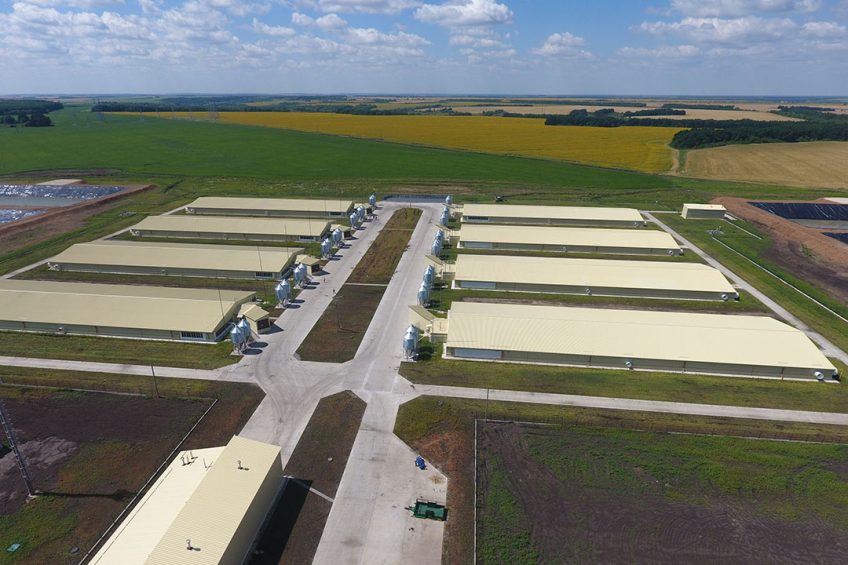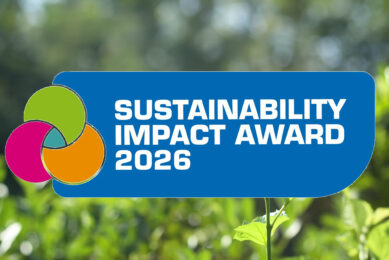Russia embraces new trends

Russian farmers find themselves in a new reality as over the past few years, the country’s environmental-protecting organisations have become a force to be reckoned with. This is likely to spur demand for new agricultural technologies in the area of sustainability and animal welfare in the coming few years.
Russian President Vladimir Putin has challenged the country’s agricultural sector to boost exports to US$ 45 billion by 2024, nearly double compared to the level achieved in 2019. In July of 2020, it was announced that the Russian government began mulling over the introduction of a permanent grain export quota. A rationale behind this step could be to switch from exporting raw materials to selling products with higher added value, including poultry, pork, and dairy products.
In terms of ecology, our industry is regularly facing unjustified demands livestock facilities requested to comply with.”
With this in mind, Russia’s leading livestock companies are rushing to expand their production facilities. However, in recent years new agricultural projects with increased frequency have begun encountering the resistance of environmentalists and local communities, who are afraid of smell, noise, and possible pollution. This trend seems to be gaining momentum in the country.
“In terms of ecology, our industry is regularly facing unjustified demands livestock facilities requested to comply with,” says Sergey Yushin, chairman of the Russian National Meat Association. “Rural population insists on something impossible, for instance, a complete absence of smell from farms. Under the pressure of public opinion, big investment projects are put on halt, although their technologies envisage the very full compliance with rather strictest environmental-protection legislation.”
Smell and emissions from pig farms
In Russia, federal legislation is built to allow rural populations to block the building of new farms or other agricultural facilities virtually without any reason. This right was neglected for some time but has been often executed during the last couple of years.
For example, in February of 2020, the Russian pork producer, agricultural holding Miratorg, cancelled the construction of 7 pig farms in Kursk Oblast, Russia, for Rub6.5 billion (US$ 100 million). Before this decision was taken, local communities had been protesting against the project for 6 months, claiming that smell and emissions could negatively impact living conditions in local areas. Miratorg will have to relocate the farms, although there is a big chance the company could experience similar problems in other parts of the country.
“In our opinion, when it comes to environmental protection, it is important to maintain a balance between the interests of the livestock industry, region economies, and local population and, of course, take into account the impact of the environmental conditions on our lives. It should not be forgotten that (with new projects) we have jobs, tax incomes in regional and federal budgets, rural territories development and social issues at stake,” Yushin says.
Recently, a policy for tightening environmental legislation has been pursued…”
Highly hazardous business
Now Russian lawmakers are closely following the public opinion in the area of environmental protection and reacting respectively.
“Recently, the Russian lawmakers proposed amendments to legislation categorising the animal and poultry farms as ‘highly hazardous’ for the environment and equalising them with toxic chemical and metallurgical enterprises,” says Albert Davleyev, president of the Russian consulting agency Agrifood strategies.
“This forces many companies to introduce various litter disposal systems – from biofuel generators to carbonising furnaces. However, most livestock, swine, and poultry producers still utilise the classical composting technologies as in many regions, there is a lot of land available for these purposes,” Davleyev says.
“Recently, a policy for tightening environmental legislation has been pursued, with the government strengthening control over the activities of the facilities affecting the environment, and also tightening the punishment systems for violations,” comments Vyacheslav Ilyinsky, HSE director of the Russian biggest meat producer Cherkizovo.
“Almost all livestock enterprises belong to the first and the highest category of hazardous facilities. Of course, their impact on the environment cannot be compared with that of oil refineries, metallurgical, or chemical companies, but the fact remains that the state assesses them as equally dangerous,” Ilyinsky adds.

Public opinion the main driver of change
Despite the enhancing government control, it is the public opinion that remains the main driver of changes. The leading Russian companies now have to turn to technological solutions that provide emission reduction and environmental protection superior to what the Russian law demands. For instance, Cherkizovo is heavily investing in the environmental-protection campaign, Ilyinsky says.
“The company is reconstructing and modernising existing treatment facilities of meat processing plants to improve runoff quality. Technologies of physicochemical and biological treatment are used, including those based on membrane bioreactors and ultraviolet irradiation,” Ilyinsky says, adding that this is not the only example of what the company does to become a more eco-friendly business.
“Currently, the most modern pig breeding complexes and large slaughterhouses are being built in Russia,” says Andrey Dalnov, senior analyst of the Russian state-owned bank Rosselhoznabank. “The Russian livestock industry is relatively young. Most production complexes were built in the last 20 years using modern technologies, taking into account the issues of animal welfare and environmental protection.”
Global warming concerns
“The protection of the environment is in the spotlight within the Russian agricultural industry, but in Russia compared to Europe, these trends have slightly different rationale,” comments a source in the Russian livestock industry who wishes not to be named.
“Global warming is not on the agenda in Russia, which is why some solutions in this area are more popular than others. For example, CO2 emissions usually receive proper attention, while feeding solutions aimed at reducing methane emissions from cattle population is almost never applied,” the source adds.
Russia is becoming warmer twice as fast as the planet as a whole, but this is not a matter of huge concern. Some scientists believe that the impact global warming has on Russian agriculture is favourable. Nearly two-thirds of the Russian territory is caught in permafrost, and climate change could expose more arable land. Global warming has already considerably reduced the number of winters with low air temperatures threatening winter crops. In many regions, the vegetation period has increased by 5 – 10 days.
“A part of the problem is that most tech solutions in this area are imported, which means they are expensive and they are even more expensive with the devaluation of the Russian rouble this year. Most Russian farmers see no point in sacrificing a part of their profit margin, getting nothing in return for the sake of battling some veiled threat (global warming), as some do not even believe in its existence,” the source concludes.
The protection of the environment is in the spotlight within the Russian agricultural industry, but in Russia compared to Europe, these trends have slightly different rationale.”
Animal welfare overlooked
While some Russian farmers are trying to stick with the world’s best practices in the area of environmental protection, it would safe to say that animal welfare standards are not so welcomed.
“The animal welfare regulations in Russia contain only minimal standards and requirements. However, it can be said that the responsible animal owners and business owners strive to create favourable conditions for animals throughout their life cycle, as well as during transportation or slaughter,” says Yushin.
“In many ways, the possibilities for the continuous improvement of animal welfare is not only limited by the purchasing power of the population but also lead to the closure of small farms and reduced competition. Market players in Russia and we agree with them, believe that some of the requirements of ecologists in the EU and several other countries are absolutely unjustified and only lead to higher prices and a decrease in the availability of meat for people with financial issues. Small-scale farms often do not have the financial ability to comply with new legal requirements and close their businesses. We believe that their interests should be taken into account,” Yushin says.
“Different from Western consumers, Russians are not concerned about the rearing conditions of farm animals. There is no official legislation that would regulate the animal welfare aspects. This is why many companies would sacrifice higher liveability for the sake of higher density, which provides more meat yields from a barn’s square meter,” Davleyev says.
Understanding the ‘sustainability’ concept
According to Davleyev, only a few companies that supply products to the international foodservice chains implement stricter welfare practices, forced by the customer’s guidelines and requirements. However, some producers are starting to reconsider their rearing technologies, having calculated losses on veterinary preparations, FCR reduction, and higher mortality rates.
“In my opinion, the Russian agricultural and livestock farming centre lacks the understanding of the “sustainability” concept. Better still, there is no such a word in the Russian language,” Davleyev says.
Animal welfare in Russia
Animal welfare is not entirely forgotten in Russia. Just recently, All-Russian Research Institute of Physiology, Biochemistry, and Animal Nutrition developed a feed additive described as an antidepressant for pigs.
The scientists suggest feeding pigs with lithium ascorbate – a combination of ascorbic acid and lithium – to help their bodies combat stress. In a research paper, which included studies on industrial farms, the effectiveness of the lithium-based adaptogens has been shown. Their use in animal diets contributed to improved stress resistance, endurance, and reduced aggressive behaviour while enhancing productivity and reproduction.
Complying to international animal welfare and sustainability regulations
The expanding export supplies are likely to prompt Russian meat companies to comply with stricter international regulations in animal welfare and sustainability. The same thing has already been seen in neighbouring Ukraine, where the poultry giant MHP is complying with animal welfare standards way stricter than the national legislation requires. The company even ceased producing foie gras in 2019, to get its business in line with European best practices.
Davleyev says “Russia already supplies beef, pork, and poultry to several dozen countries worldwide. Chicken cuts are exported to major international QSR chains in the Middle East, Central Asia, and China. Evidently, the expansion of export activities will require a much higher level of compliance with international and national food safety and animal welfare requirements, forcing Russian companies to introduce new live production technologies and procedures.”
“I believe we would dive into this issue at some point, but we would not turn it into a circus or a tool of redivision of the market,” Yushin concludes.






